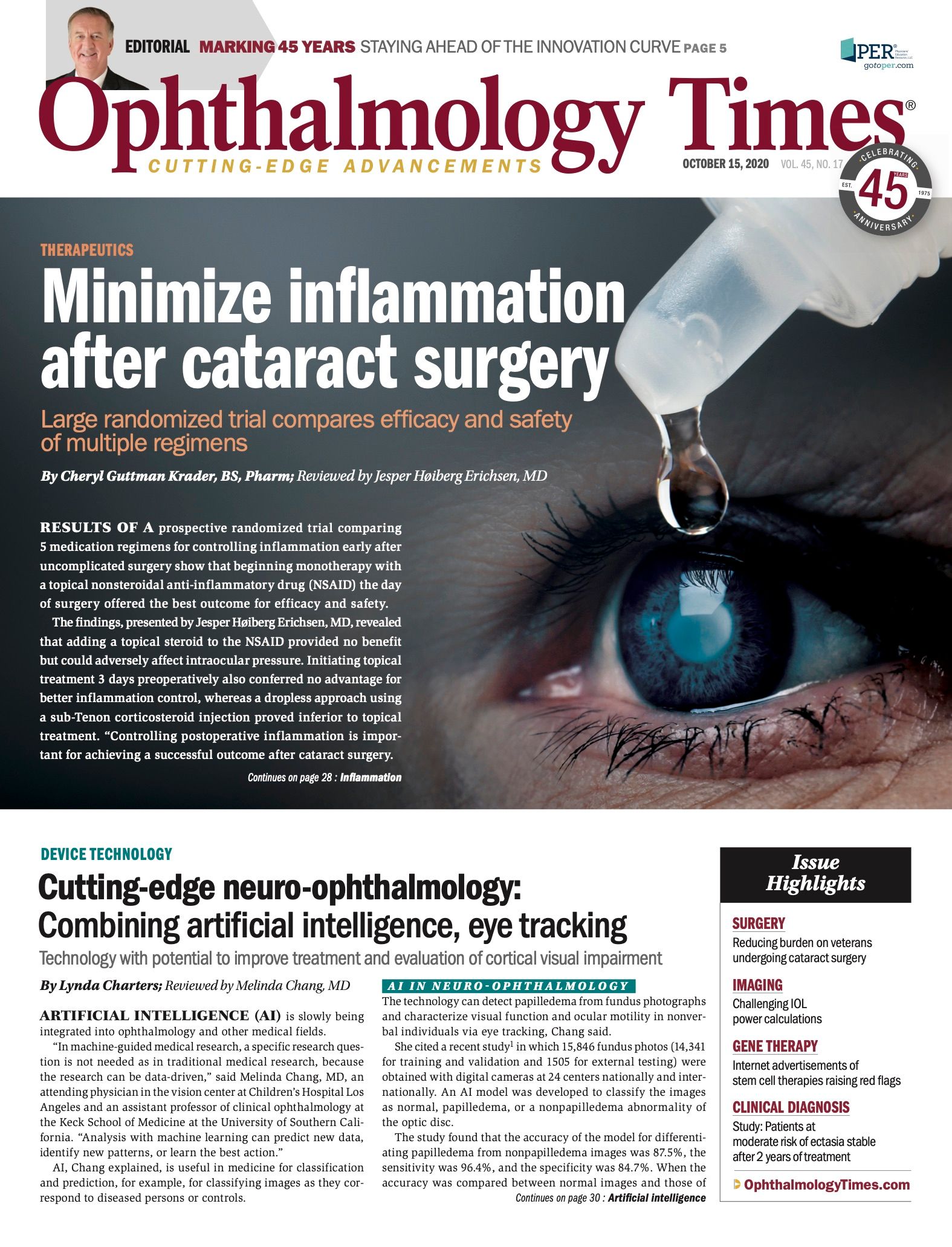Publication
Article
Digital Edition
Deep learning algorithm proven accurate for AMD classification
Author(s):
Algorithm detects, stratifies severity of disease, facilitates early diagnosis.

This article was reviewed by Sharmina Alauddin, MD
An artificial intelligence (AI)-based telemedicine platform for screening and early diagnosis of age-related macular degeneration (AMD) has been validated in a prospective trial, said Sharmina Alauddin, MD, at the 2020 Association for Research in Vision and Ophthalmology (ARVO) virtual meeting.
The deep learning algorithm’s (iPredict.health, iHealthScreen Inc USA) performance for classifying fundus images was evaluated using the gradings from expert human readers as the reference standard.
Related: Teaching AI algorithms to identify corneal pathology: The future is now
The analyses showed that the AI-based platform had 88.67% accuracy, 86.57% sensitivity, and 90.36% specificity.
“The results of our trial show that the tool is now ready for clinical use and potential deployment for remote telemedical use,” said Alauddin, a clinical research associate at the New York Eye and Ear Infirmary of Mount Sinai, New York, New York.
Alauddin and colleagues investigated the AI-based system’s performance in detecting and stratifying severity of AMD as a means of facilitating early diagnosis to improve patient prognosis.
“It is well known that AMD is a major cause of blindness among adults aged 50 years and older in developed countries,” Alauddin said. “If we are able to diagnose AMD by screening in any clinical setting, we could start treating it early and thereby reduce the number of patients who become blind from their disease.”
The deep learning algorithm was originally developed and tested using images from the Age-Related Eye Disease Study (AREDS).
Related: Cutting-edge neuro-ophthalmology: Combining artificial intelligence, eye tracking
“A deep learning algorithm teaches itself from massive datasets through artificial and neural networks. It mimics how our brain works to solve problems,” Alauddin said.
The validation study was performed using prospectively acquired, color fundus images obtained from 160 nondilated patients aged 50 years and older seen in New York Eye and Ear Infirmary-affiliated eye clinics.
After excluding patients who had another type of retinal degeneration, prior retinal surgery, diabetic retinopathy, or macular edema and images with poor quality, images from 290 eyes of 150 subjects were included in the analysis.
Based on the worst eye, patients were automatically classified by the software as referable AMD or nonreferable AMD. Referable AMD included intermediate AMD (drusen >125 μm and/or pigmentary abnormalities) and late AMD (geographic atrophy or neovascularization) while the nonreferable class included eyes with a normal macula or early AMD (drusen >63 to ≤125 μm).
Related: AI screening: Allowing physicians to see eye more clearly from afar
In addition, each image was independently reviewed and graded by two ophthalmologists. The performance of the AI-based system was evaluated by comparing its results with those of the expert human graders.
After adjudication of grading discrepancies, 66 images were classified as referable and 84 images as nonreferable. The AI-based program correctly identified 58 images of intermediate and advanced AMD and 75 images that were normal or early AMD.
The investigators believe that for public health service, it is both warranted and feasible to create a more comprehensive, fully effective system trained on other retinal pathologies.
Read more by Cheryl Guttman Krader
--
Sharmina Alauddin, MD
e:s.alauddin@yahoo.com
Alauddin has no relevant financial interests to disclose.

Newsletter
Don’t miss out—get Ophthalmology Times updates on the latest clinical advancements and expert interviews, straight to your inbox.





